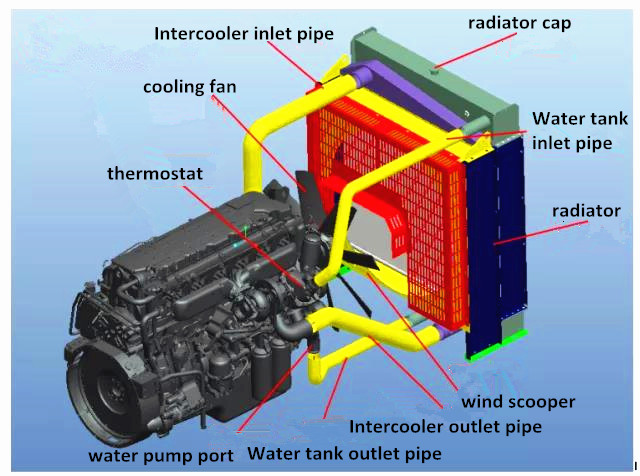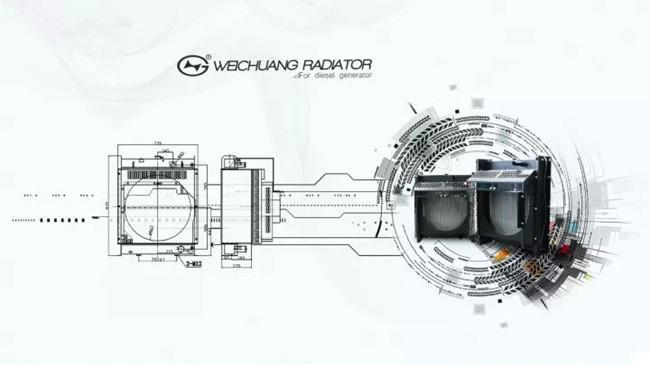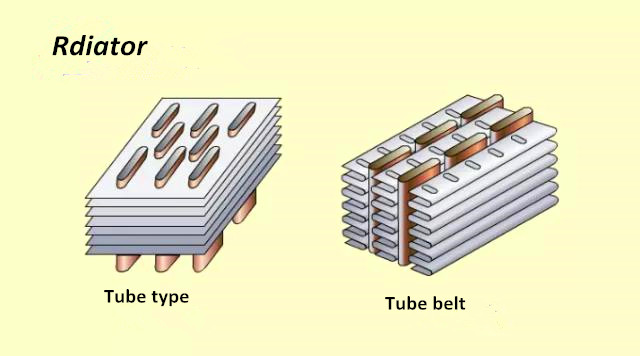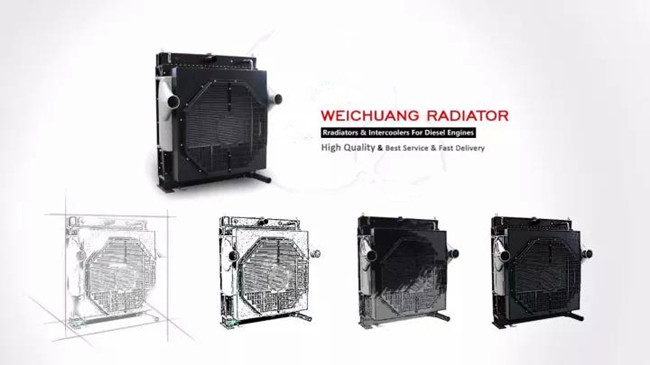How Does Engine Cooling System Work
The function of engine cooling system is to keep the engine within the proper temperature range under all operating conditions. The cooling system must prevent the engine from overheating and prevent the engine from being too cold in winter. After the engine is cold-started, the cooling system also ensures that the engine heats up quickly and reaches the normal operating temperature as quickly as possible. The cooling system is an important system to maintain the normal temperature of the engine and ensure the normal operation of the engine.
The water cooling system of the engine is a forced circulation water cooling system, that is, the pump is used to increase the pressure of the coolant, and the forced coolant is circulated in the engine. Such system includes water pump, radiator, cooling fan, thermostat, water jacket in engine block and cylinder head, and other attachments.

The forced circulation type water cooling system uses a water pump to pressurize the cooling liquid of the system to flow in the water jacket. The cooling water absorbs heat from the cylinder wall, the temperature rises, the hot water flows upward into the cylinder head, and then flows out from the cylinder head and into the radiator. Due to the powerful blowing action of the fan, the air flows through the radiator at a high speed from front to back, constantly taking away the heat of the water flowing through the radiator. The cooled water is pumped back into the jacket from the bottom of the radiator by the water pump. Water circulates continuously in the cooling system.
The function of the fan is to blow air through the radiator when the fan rotates, so as to enhance the heat dissipation capacity of the radiator and accelerate the cooling speed of the coolant.

The radiator core is the core part of radiator and plays a major role in heat dissipation. The radiator core is composed of a heat-dissipating tube, a heat sink, and upper and lower main pieces. Thanks to its sufficient heat dissipation area, it ensures that the necessary heat is dissipated from the engine to the surrounding atmosphere. Moreover, the radiator core is made of a extremely thin metal and alloy with good thermal conductivity, which enables the radiator core to achieve the highest heat dissipation effect with the minimum quality and size. There are many types of radiator cores, such as tube type, tube belt, and tube core type and so on. As shown in the figure, the most common ones are tube type and tube belt.

The role of the thermostat is to automatically change the flow rate and circulation route of the coolant with the engine load and water temperature to ensure that the engine works at a suitable temperature, reducing fuel consumption and wear of the machine. The cooling water passes through the water pump-water jacket-thermometer- radiator, and is also pressed by the water pump into the water jacket. The water flow route is long and the heat dissipation intensity is large, which is called the large circulation of the water cooling system. The cooling water passes through the water pump-water jacket- thermometer without the radiator, but is directly pressed by the water pump into the circulation of the water jacket. The water flow route is short and the heat dissipation intensity is small, which is called a small cycle of the water cooling system.

The thermostat is generally placed at the water outlet of the engine. It is required that the amount of leakage of the thermostat is small, and the flow area is large when fully opened. Increasing the flow area of the thermostat can be achieved by increasing the lift of the thermostat valve and increasing the diameter of the valve. More advanced thermostats abroad increase the flow area by increasing the valve lift, which can reduce the problems caused by increasing the diameter of the thermostat valve and the tight seal. However, increasing the lift of the thermostat requires higher technical requirements for the thermostat. Some engines use two thermostats in parallel to increase the flow area of the thermostat.



Comments